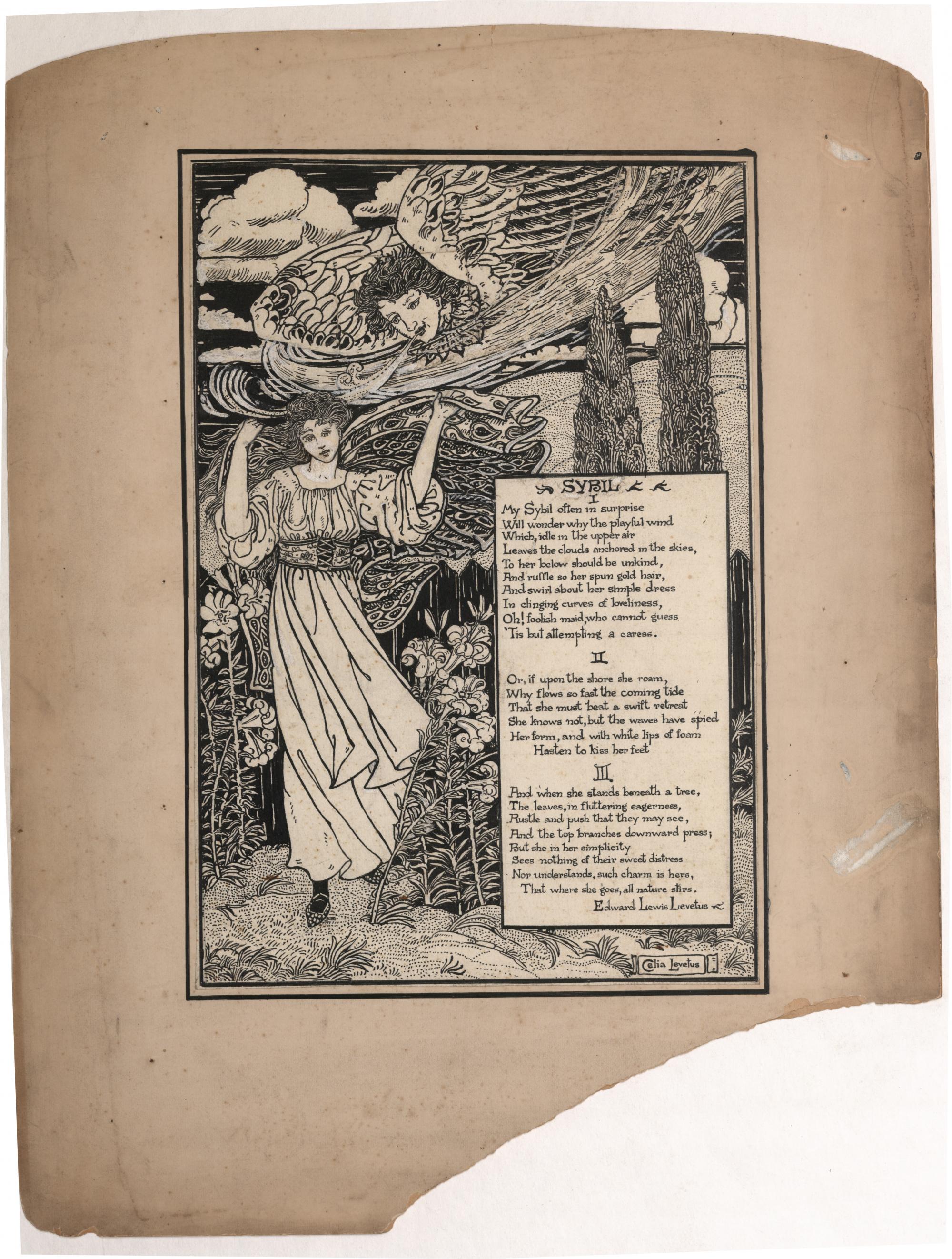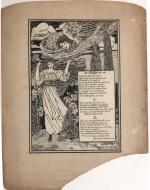Created by Rebecca Mitchell on Fri, 07/06/2018 - 09:20
Description:
Sybil
Poem by Edward Levetus,
illustrated by Celia Levetus (1898-99)
The 1897 collection Verse Fancies (also on display) contains a number of collaborations between siblings Celia and Edward Levetus, and Sybil is particularly notable within the volume for its seamless blend of poetry and illustration. The verse itself is not laid out in a rigid format, but instead is lyrical and relaxed. Levetus’s illustration reflects this freedom, as we see the liberated Sybil revelling in a world free of mankind’s restrictive influences. Sybil innocence harks back to a time when the world was simpler and not dominated by machines or technology - a time idealised by the Pre-Raphaelites. This simplicity is further emphasised by the artwork’s monochrome palette.
In 1898, the Pall Mall Gazette commented favourably upon Verse Fancies, labelling it a ‘modest and pleasing volume’, and granting particular praise to Sybil which, the article graciously concluded, held a ‘considerable degree of merit’. Other reviews failed to mention the work of Celia Levetus at all, choosing instead to review Verse Fancies as a purely literary collection. Verse Fancies represents a partnership of two siblings, and while the brother may have been granted more public recognition because of the sexism of the time, the poems and illustrations are integral to one another and the whole is more than the sum of its parts. The verse is placed inside the illustration, and the siblings’ talents are perfectly unified.
Caption by Amelia Stevens Greenhalgh and George Bandy
Copyright:
Associated Place(s)
Timeline of Events Associated with Celia Levetus Sybil
Featured in Exhibit:
Artist:
- Celia Levetus


